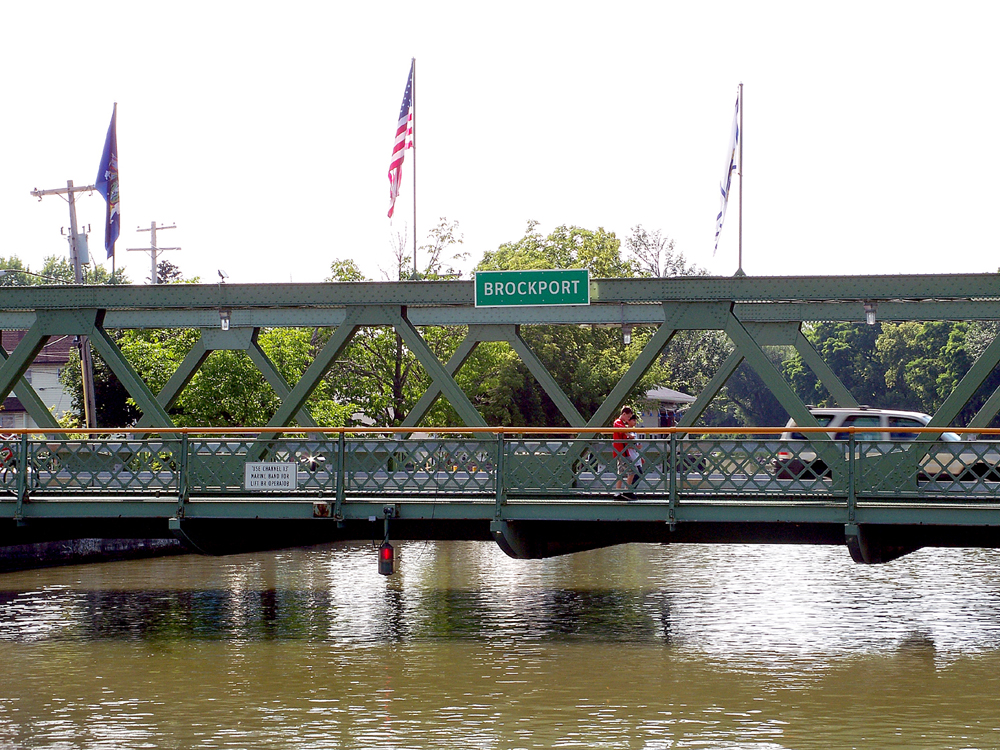DEC officials present proposed remediation plan for JMT Properties site
by Kristina Gabalski
Officials from the New York State Department of Environmental Conservation presented their proposed remedial action plans for the JMT Properties facility (former GE/Black&Decker) site to residents and Village of Brockport leaders during a meeting March 13 at the Seymour Library.
The site, which is on the state’s superfund list of waste sites that pose a significant threat to public health or the environment, is located at 200 State Street in the village. Remediation plans include an off-site location involving groundwater contamination in the Lyman Street area north of the canal.
Larry Thomas of the DEC detailed actions that have been taken both on-site and off-site since 1988 and said that measures including a groundwater pump and treatment system installed at 98 Lyman St. in 2001 are “bringing concentrations (of total VOCs) down. The system is doing it’s job,” Thomas said.
The proposed off-site remedy includes pulsed pumping of the existing off-site groundwater extraction and treatment system at 98 Lyman Street; a groundwater monitoring program and re-evaluation of soil vapor intrusion potential per current NYS Department of Health guidance.
The proposed on-site remedy includes the adoption of interim measures as primary engineering controls; the removal of PCB-containing electrical equipment (which includes two large transformers and a capacitor); and institutional controls for site use – via an environmental easement.
Thomas explained that because residual PCBs are present in the soils, there would be controls on any excavation at the site, for example.
Thomas said in 2010, the DEC coordinated the removal of PCB oil from the transformers and capacitor and drained electrical equipment on-site.
The equipment “still contains significant concentrations,” Thomas said. The transformers and capacitor are proposed for removal.
When asked by a resident why the transformers weren’t removed years ago, Thomas responded, “We’re doing it now.”
The proposed site management plan includes compliance with institutional controls; monitoring and maintenance of engineering controls, contingent actions (PCBs – Line 2 soil vapor intrusion evaluation) and on-going inspection, reporting and certification. The plan also addresses storm sewer solids monitoring (sediment trap) and potential future exposures/response actions in event PCB material becomes accessible (e.g. building demolished), Thomas said.
In regards to soil vapor intrusion at the main building on the site, Thomas said limited testing was done in 2008. There was no operational electrical service, heat or air handling when tested and elevated concentrations of chlorinated VOCs were found in the sub-slab and sump air. The DEC says that re-testing is needed if the building utilities are restored and occupation planned.
“There is potential for exposure if the building was occupied,” Thomas said.
In response to questions about who is responsible for paying for remediation of the main building, Kelly Cloyd of the DEC said, “Once a remedy is selected, we will pursue responsible parties.” He said it was possible those parties might refuse to pay.
Detailed plans are available at the Seymour Library, Village of Brockport, Town of Sweden, NYSDEC offices and online at dec.ny.gov/chemical/37556.html.
The public comment period ends March 29. Comments can be sent to Larry Thomas – NYSDEC, 625 Broadway, Albany, NY 12233-7017; via email at lxthomas@gw.dec.state.ny.us; or by phone at 518-402-9813 or toll-free at 888-459-8667.



